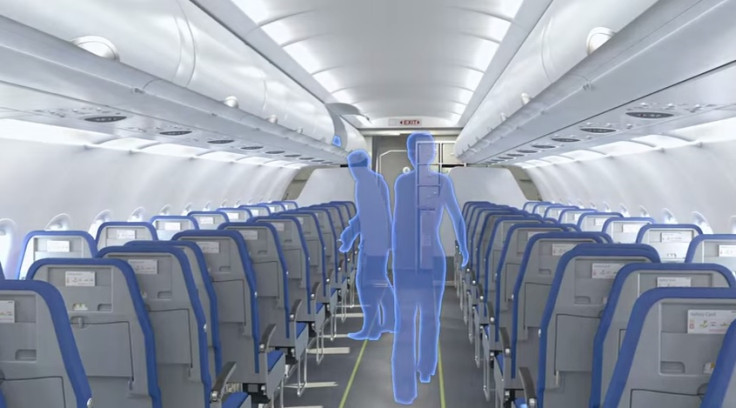New sliding plane seat design revealed: The simple trick to make boarding a plane faster

Boarding a plane can be a painfully slow and pesky process mainly caused by people jamming the aisles as they stow their luggage in the overhead locker. With no room to pass that's when delays and frustration begins.
A simple solution to this problem has been revealed by an American design company whereby a new sliding seat system can create more aisle room for passengers to pass. The idea by Molon Labe Designs sees the aisle seats slide over the middle seat to widen the gangway from an average 19in to positively roomy 43in. They are then locked back into place when passengers are ready to sit.

The designers claim it could cut boarding time in half resulting in faster airport turnarounds so airlines could fly an extra two hours each day. It will also reduce fuel costs, man hours waiting for the plane to be ready and not to mention the obvious reduction in stress of the passengers.
The Side-Slip seat has a staggered design based on a three-seat setup with the middle seat set slightly behind the window and aisle seats. This is intended to give the feeling of more space for passengers as well as settle the age-old dispute over who gets the middle arm rests as there will be dedicated arm rests. The only problem we foresee is what the passenger in the middle seat does while the seats are in the "closed" position.
It's estimated by US trade organisation Airlines for America that for every minute a plane sits at the gate with its engine running it costs approximately $81 to $100 (£53-£65). In trial runs of the seating system the creators claim it made boarding more efficient by 4.5 minutes (when using random Ryan Air-style sit-anywhere method) or 6.7 minutes with pre-assigned seating. Should an airline perform 1,000 turnarounds in a day it saving 6.7 minutes each time it would save $670,000 (£439,000) a day, or $245m (£160m) a year.
The Molon Labe Design seats are targeted towards budget airlines that conduct short-haul flights of no more than three hours so they can benefit from the time saved from the more efficient boarding time. They were unveiled as a concept at the World Low Cost Airlines Congress in London and are currently undergoing a Federal Aviation Administration certification process.
© Copyright IBTimes 2025. All rights reserved.





















